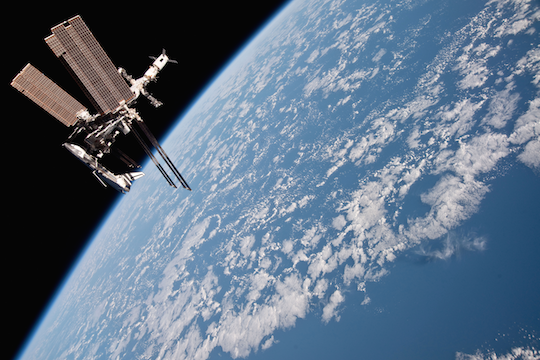In my previous rant about dynamic exposure in Elite Dangerous (which honestly applies to any other space game made to date), I made a rough calculation to predict the brightness of stars as they should realistically appear in photos taken in outer space. My prediction was, that,
- for an illumination of similar strength to that on earth,
- if the sunlit parts are properly exposed,
- and with an angular resolution of about 2 arc minutes per pixel,
then the pixel-value of a prominent star should be in the order of 1 to 3 (out of 255, in 8‑bit sRGB encoding). Since then I was curious to find some real world validation for that fact, and it seems I have now found it.

The photo above was taken from here, and is of such an exceptional quality that it can be brightened by more than 100 times without showing any visible bloom or glare effects. Now, where are the stars? Where indeed, just add about +11 EV (and subtract the slight black level):
 In the original photo, the pixel value of the brightest stars are in the 20%-range; however that photo has a crazy resolution where a single pixel is likely to represent much less than one arc second. If the photo is downscaled to web resolution (as shown above), then the RGB values of stars indeed turn out to be around 5 (out of 255).
In the original photo, the pixel value of the brightest stars are in the 20%-range; however that photo has a crazy resolution where a single pixel is likely to represent much less than one arc second. If the photo is downscaled to web resolution (as shown above), then the RGB values of stars indeed turn out to be around 5 (out of 255).
And while I am at it, check out these amazing videos of space walk footage taken with a real camera, which contains countless examples of real-world (or real-space?) illumination situations!